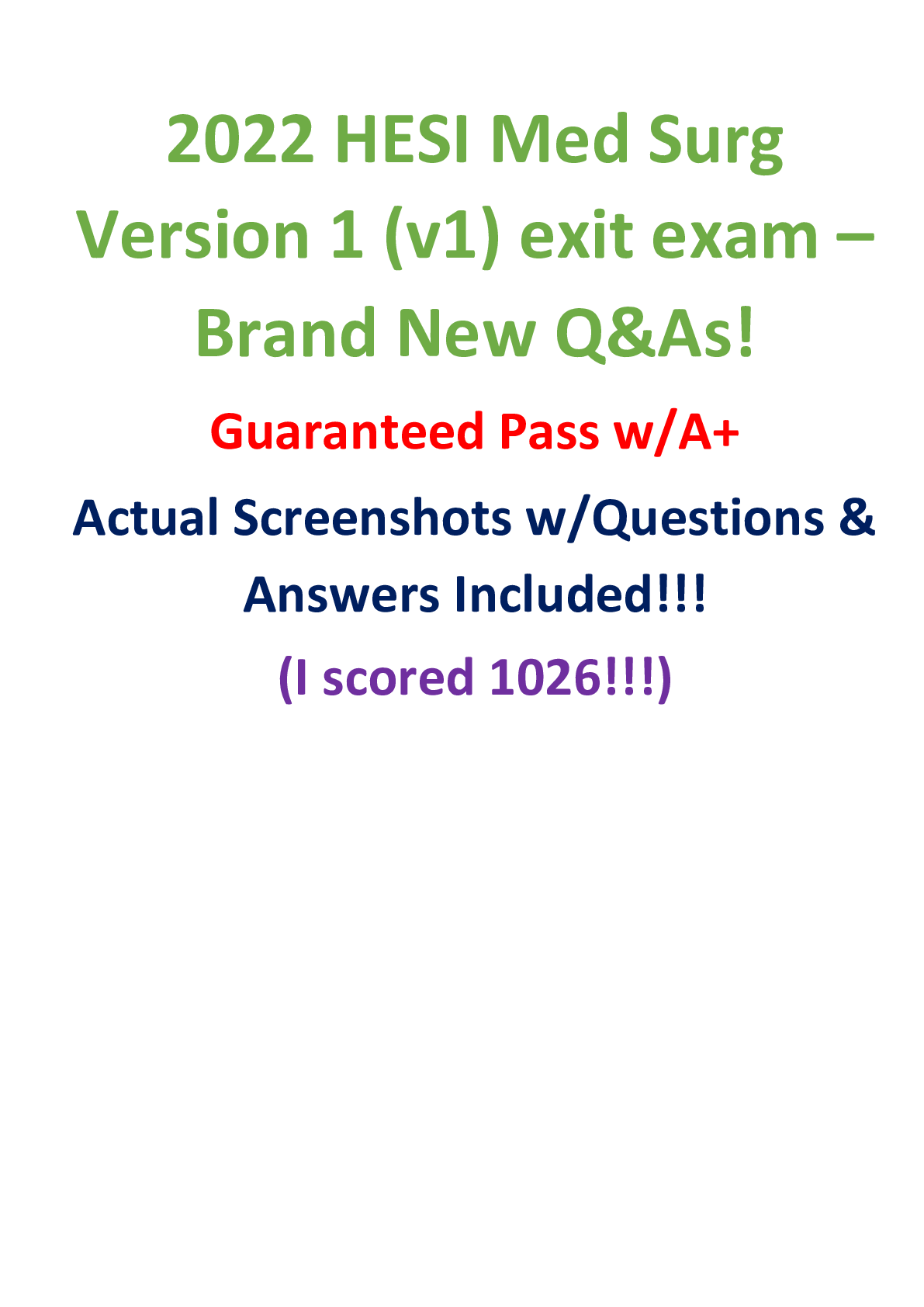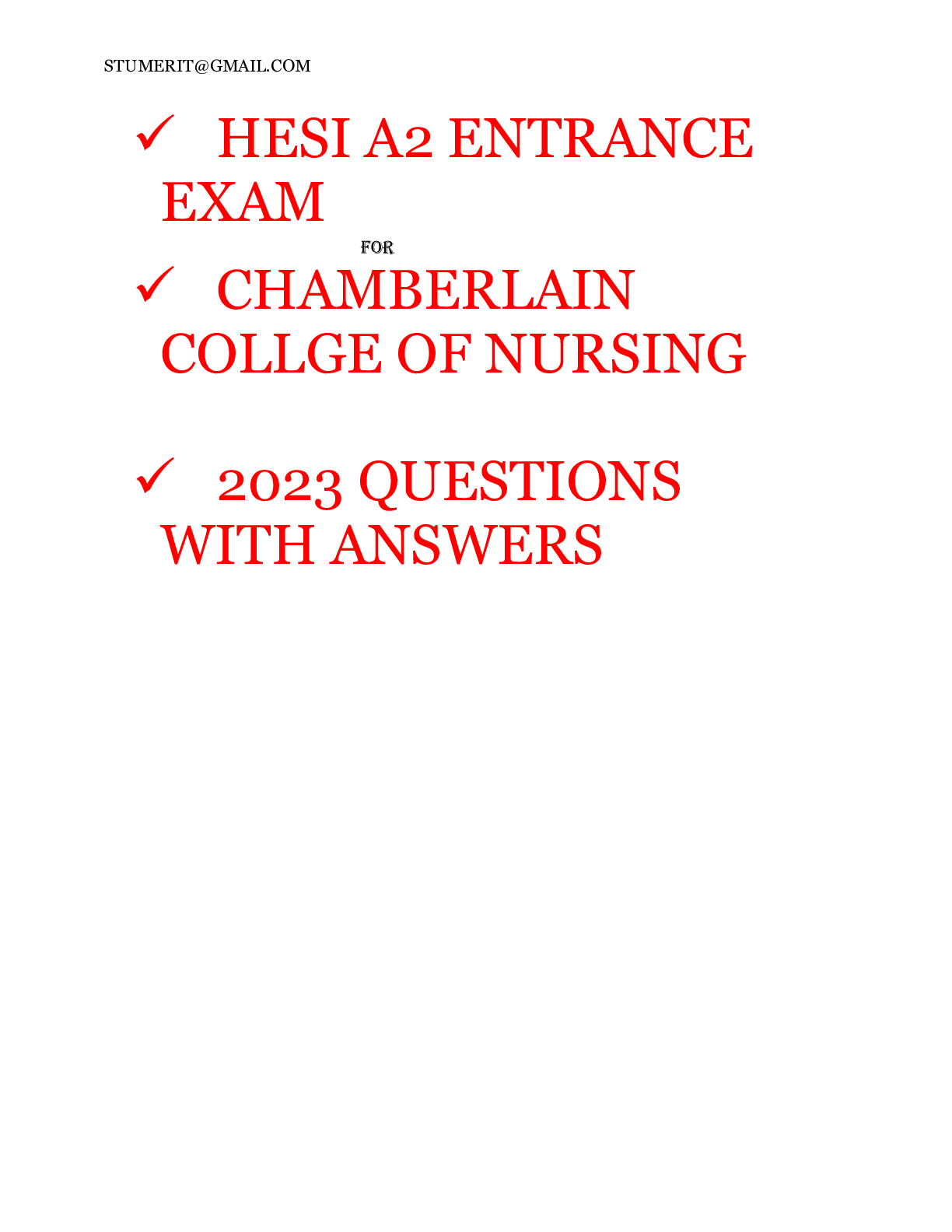PEDIATRICS - HESI PRACTICE EXAM
Document Content and Description Below
The nurse is giving preoperative instructions to a 14-year old female client who is scheduled for surgery to correct a spinal curvature. Which statement by the client best demonstrates that learning h... as taken place? A. I will read all the literature you gave me before surgery. B. I have had surgery before when I broke my wrist in a bike accident, so I know what to expect. C. All the things people have told me will help me take care of my back. D. I understand that I will be in a body cast and I will show you how you taught me to turn. (ANS- D. I understand that I will be in a body cast and I will show you how you taught me to turn. Outcome of learning is best demonstrated when the client not only verbalizes an understanding, but also can provide a return demonstration. A 14-year old may or may not follow through with reading material and there is no way of measuring that way of learning. Have a previous surgery may help the client understand the surgical process, but wrist surgery is very different from spinal surgery and emergency surgery is different than elective surgery. In (C), the client may be saying what the nurse wants to hear, without expressing any real understanding of what to do after surgery. To take the vital signs of a 4-month old child, which order will give the most accurate results? A. Respiratory rate, heart rate, then rectal temperature B. Heart rate, rectal temperature, then respiratory rate. C. Rectal temperature, heart rate, then respiratory rate D. Rectal temperature, respiratory rate, then heart rate (ANS- A. Respiratory rate, heart rate, then rectal temperature The respiratory rate should be taken first in infants, since touching them or performing unpleasant procedures usually makes them cry, elevating the heart rate and making respirations difficult to count. Rectal temperature is the most invasive procedure, and is mot likely to precipitate crying, so should be done last. During routine screening at a school clinic, an otoscope examination of a child's ear reveals a tympanic membrane that is pearly gray, slightly bulging, and not movable. What action should the nurse take next? A. No action required, as this is an expected finding for a school-aged child B. Ask the child if he/she has had a cold, runny nose, or any ear pain lately. C. Send a note home advising the parents to have the child evaluated by a healthcare provider as soon as possible. d. Call the parents and have them take the child home from school for the rest of the day. (ANS- B. Ask the child if he/she has had a cold, runny nose, or any ear pain lately. More information is needed to interpret these findings. The tympanic membrane is normally pearly gray, not bulging, and moves when the client blows against resistance or a small puff of air is blown into the ear canal. Since this child's findings are not completely normal, further assessment of history and related signs and symptoms is indicated for accurate interpretation of the findings. (A), (C), and (D) are inappropriate actions based on the data obtained from the otoscope examination. Which restraint should be used for a toddler after a cleft palate repair? A. clove hitch B. Mummy C. elbow D. jacket (ANS- C. elbow Elbow restraints Elbow restraints prevent children from bending their arms and bringing their hands to the oral surgical site. A clove hitch restrains the hands, but the child can bend and bring their head to their hands. A mummy restraint is used during procedures. A jacket restraint restrains the body torso and is not appropriate. What preoperative nursing intervention should be included in the plan of care for an infant with pyloric stenosis? A. Monitor for signs of metabolic acidosis. B. estimate the quantity of diarrhea stools. C. place in a supine position after feeding D. observe for projectile vomiting. (ANS- D. observe for projectile vomiting. Projectile vomiting which contributes to metabolic alkalosis, is the classic sign of pyloric stenosis. Estimating the quantity of diarrhea stools is not indicated. Placing the child in a supine position is dangerous due to the potential for aspiration with frequent vomiting. A six-month-old returns from surgery with elbow restraints in place. What nursing care should be included when caring for any restrained child? A. keep restraints on at all times. B. remove restraints one at a time and provide range of motion exercises C. Remove all restraints simultaneously and provide lay activities D. renew the healthcare provider's prescription for restraints every 72 hours. (ANS- B. remove restraints one at a time and provide range of motion exercises Removing restraints one at a time is safer than removing all of them at once. The child needs to exercise and should not be kept in restraints at all times. The renewal of the healthcare provider's prescription varies with hospitals and it does not really answer the question. [Show More]
Last updated: 1 year ago
Preview 1 out of 36 pages

Reviews( 0 )
Document information
Connected school, study & course
About the document
Uploaded On
Sep 15, 2022
Number of pages
36
Written in
Additional information
This document has been written for:
Uploaded
Sep 15, 2022
Downloads
0
Views
35


.png)













.png)




